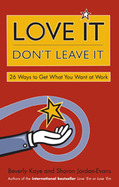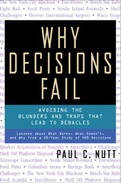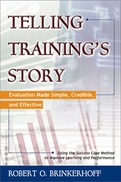2003
- By the bestselling author of Money and the Meaning of Life
- The first paperback edition of a Needleman classic, with a new introduction by the author and a new foreword by John Cleese
- Offers a bold and iconoclastic alternative to using traditional "time management" approaches to reclaim our time
- Uses examples from the great wisdom teachings to show how to recover the fullness of meaningful time in the conditions of the modern world
2006
Businesses trying to stay lean and fit face the same challenges as human dieters--success requires fundamental lifestyle changes and sustained, continuing effort. And, like human dieters, businesses, too, are susceptible to the come-ons of the latest quick-fix fads, which often deliver short-term gains but fall short in the long run. Eventually they go back to their old habits and they're right back where they started. It's a vicious cycle.
The Wall Street Diet uses a diet metaphor to illustrate a complete, integrated approach to what every business must do to become a lean, healthy enterprise. Like a truly effective weight loss program, it is a plan for achieving sustained benefits--following the Wall Street Diet will add five to eight points of potential new profit to a business's bottom line.
Using the proven concept of total enterprise optimization (TEO) as a framework, the book introduces a fitness program that brings together lean techniques, advanced supply chain management, improved quality concepts, selective outsourcing, and a focus on both the top and bottom lines. The authors detail specific TEO efforts that add savings and create new values, demonstrating the synergy to be had by combining those efforts with improved consumption data and analysis and innovative partnering with allied businesses. Fundamentally, The Wall Street Diet is about changing the culture that drives the business, leading to better earnings, continued growth, and the greatest value for all stakeholders.
- Uses a unique diet metaphor to show businesses how to change their lifestyles and become lean, efficient enterprises
- Offers a comprehensive approach to business growth that ties together a broad spectrum of business practices into one synergistic fitness program
- Includes checklists for senior managers and functional managers and "diet champions" so everyone can chart their progress in implementing the Wall Street Diet
- A Wall Street Journal bestseller
- Winner of the 2004 Publishers Marketing Association Benjamin Franklin Award for Best Career Book
- From the authors of Love 'Em or Lose 'Em---over 275,000 copies sold
- Shows the millions of workers who can't afford to leave their jobs in today's slow economy how to find satisfaction right where they are---the What Color Is Your Parachute? for workers who aren't changing jobs
- Features 26 practical, easy-to-implement strategies in the A-to-Z format that made Love 'Em or Lose 'Em so universally appealing
2002
Why Decisions Fail translates decades of award-winning research into practical terms that managers can use to improve their own decision-making practices.
- Tells the stories behind the stories of such famous debacles as EuroDisney, Barings Bank, Ford Pinto, the Waco siege, and the Challenger tragedy
- Shows how to avoid the most common blunders and traps that lead to disaster
- Offers lessons about what works, what doesn't, and why from a twenty-year study of 400 decisions
- Speaks to managers by dealing with decisions that they must confront on a daily basis
2002
If you're one of the millions of people who are feeling overcommitted, overworked, and overtired, you've probably already learned that you can't juggle your way to a balanced life. With ever-increasing demands at work and at home, juggling only leads to exhaustion and frustration. Beyond Juggling presents five alternative strategies--Alternating, Outsourcing, Bundling, Techflexing, and Simplifying--that don't require either hyperactive time management or drastic career downshifting. Instead, it offers a collection of tools to help you craft a realistic rebalancing plan, tailored to your life needs and career situation.
Extremely practical, Beyond Juggling details the five strategies, explains the rewards and drawbacks associated with each, and provides real-life case studies of people who have used each method successfully to rebalance their lives.
Using the self-assessment instrument included in the book, you'll be able to pinpoint the work-life strategy (or strategies) you are currently using. Additional quizzes and checklists will help you take steps to reduce the dissonance between your professional and personal lives and achieve more of the balance you crave.
- Written specifically for people who want to stay highly involved in both their careers and their personal lives, rather than simplifying or cutting back in some way
- Details four alternative strategies people can use to effectively balance their work and personal lives
- Numerous case studies show how real people have successfully implemented these strategies
- Exercises help readers find strategies that are compatible with their own life choices and goals
- For more information, visit www.beyondjuggling.com
Based on careful analysis of participants' first-person accounts of their experiences in a training initiative, SCM doesn't just measure the impact of training, but pinpoints the very factors that make or break training success. Filled with examples, illustrations, tools, and checklists, Telling Training's Story not only shares the power of the Success Case Method to evaluate training, it also offers practical step-by-step guidelines for increasing the ROI of future learning and performance initiatives.
• Offers a simple, straightforward yet robust and convincing method for demonstrating the effectiveness of training
• A detailed how-to manual, filled with tools, examples, checklists, and step-by-step advice
What all trainers know in their gut--that training and development is valuable and worthwhile--is something that needs to be proven over and over to clients focused on bottom-line results. As a result, there have been many books and articles about evaluating training, but most of the methods they describe are too elaborate, too complex, too costly, too difficult to explain--or worse, produce data nobody believes.
In Telling Training's Story, Story Robert Brinkerhoff offers a simple, compelling way of evaluating training's impact: The Success Case Method (SCM). Based on careful analysis of participants' first-person accounts of their experiences in a training initiative, SCM has been proven robust enough to withstand scrutiny from both a research and a business perspective, and will not choke real world practitioners and their clients with cumbersome methods and arcane statistical gyrations. And SCM does not just measure and document the impact of training, it uncovers and pinpoints the factors that make or break training success. Armed with this information, training leaders and their clients can dramatically increase the ROI of future learning and performance initiatives.
Filled with examples, illustrations, tools, and checklists, Telling Training’s Story not only shares the power of the Success Case Method to evaluate training, it also offers practical step-by-step guidelines for creating SCM projects and ensuring meaningful results.






















